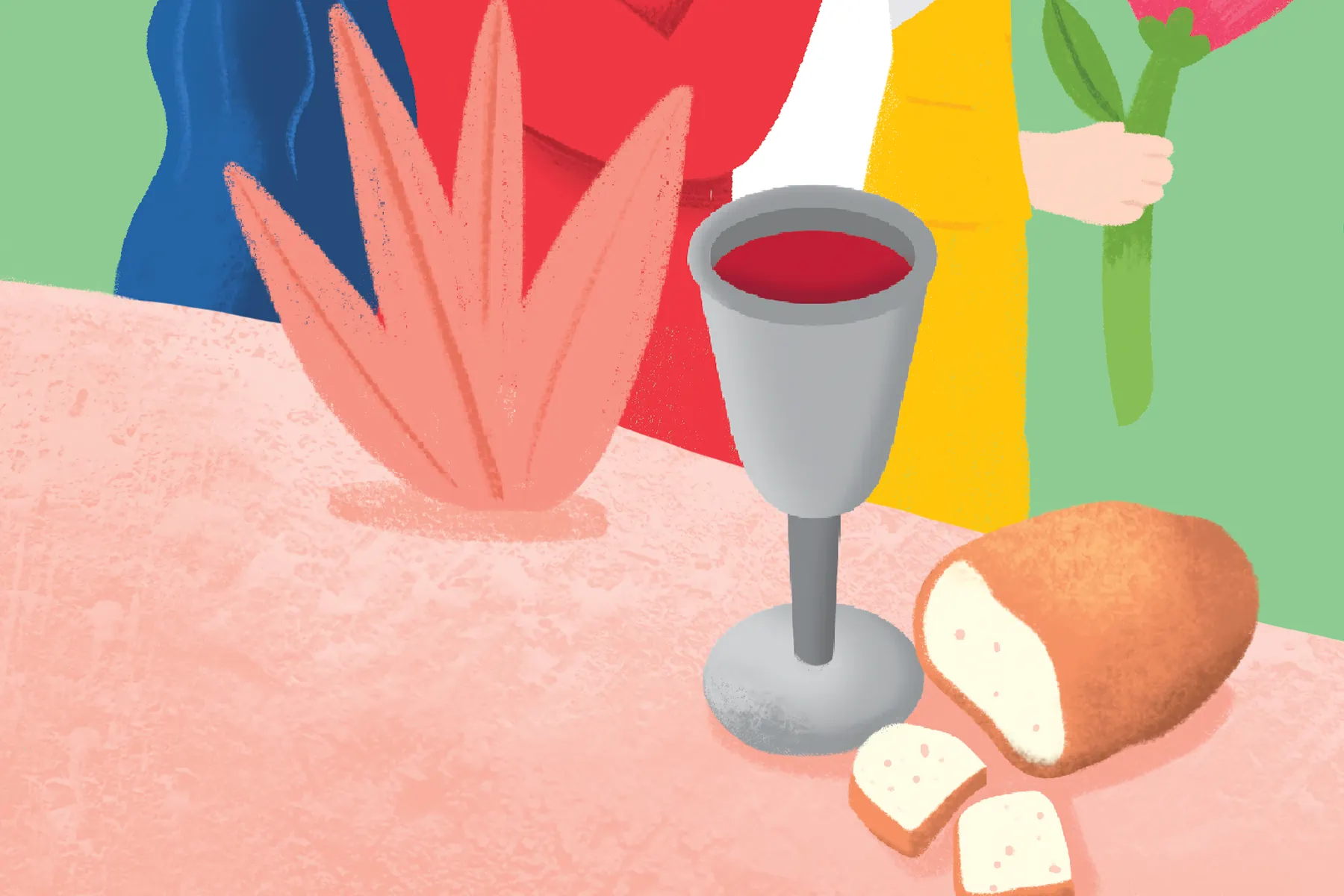Our Covenant with the Uniting Aboriginal and Islander Christian Congress
“So now, even though I’m in jail because I follow Jesus, I’m asking you strongly to live the right way. You see, God picked you to be his own people, so you have to live his way. Don’t think that you are more important than other people. You have to be good to other people, you have to listen to them and try to understand them. Don’t get angry with each other, but you have to love each other all the time. Try hard to let God’s spirit keep you together as friends, without any trouble between you.”
Ephesians 4: 1–3, Plain English Version
At the Northern Regional Council of Congress, we were offered this word from scripture. It holds a profound insight into the ongoing task of our covenanting journey as a Uniting Church, which is an ongoing call to us all. Covenanting is not the responsibility of one council or committee; of Church leaders or those with designated responsibilities. We are all ongoing participants in the covenanting journey.
The Covenanting Statement (1994) and the revised Preamble (2009) are and will remain foundational for our life. Recognising the Uniting Aboriginal and Islander Christian Congress in the Uniting Church’s Constitution has been one structural way through which we’ve expressed our commitment to walk together as First and Second Peoples. But this is only the beginning. We have much work to do in being shaped by the Covenant and embracing its meaning and purpose. The Preamble describes this in one way:
“This was so that all may see a destiny together, praying and working together for a fuller expression of our reconciliation in Jesus Christ.”
Ngarrindjeri man Ken Sumner reflects on it in another:
“Reading in the Basis that we are called ‘into the fellowship of his sufferings’ reminds all of us, First Peoples and Second Peoples from many lands, that we are part of the one body. When one part of the body is suffering, we are all suffering…we are called to show that we feel the sufferings of the world, including the sufferings of First Peoples, and work as an ‘instrument of Christ’ to bear witness to the hope of reconciliation and renewal.”12
In our travels around the Church, we heard many stories of pain and brokenness from members, communities and councils of Congress. We heard that while many are proud of the Covenant, we continue to struggle to live it out in real ways, in both congregational life and more broadly.
We heard there is much more work to do in truly listening to and being transformed by the theological wisdom and insight of First Peoples. Incorporating Indigenous theology into our theological education and formation will be crucial for the future. First Peoples are still expected to leave their culture at the church door, despite the affirmations we made in the Preamble:
“The First Peoples had already encountered the Creator God before the arrival of the colonisers; the Spirit was already in the land revealing God to the people through law, custom and ceremony. The same love and grace that was finally and fully revealed in Jesus Christ sustained the First Peoples and gave them particular insights into God’s ways.”
We heard that even though there is renewal in parts of Congress, it struggles like many other parts of the Church to find a new generation of leaders.
As we said in Section 2 of Act2: In Response to God’s Call the ministry and mission of Congress is very diverse. Diverse structures will be needed to match. Our conciliar structures may continue to be valuable, however Congress may also find that more fit-for-purpose governance is necessary. We remain open to that possibility. Our governance and resourcing arrangements will need to recognise the commitments we have made and our ongoing relationship.
Our Multicultural Identity
In 1985 we declared, “We are a Multicultural Church”. Proud of our commitment to embrace our diversity, this statement is referenced often, but we are yet to see it truly shape our life.
We have heard the words ‘multicultural’, ‘cross-cultural’ and ‘inter-cultural’ used interchangeably across the life of our Church. Seforosa Carroll in her theological culture contribution worked to unpick the origins, use and meanings of these three terms. Summarised this way, Carroll says, “…multicultural describes a reality; cross-cultural is a theological rationale; and intercultural is intentional ecclesial practice.”13
We celebrate the many vibrant migrant-ethnic Churches that have found a home in the Uniting Church, and our growing number of CALD leaders. However, conversations with those leaders will remind you we still have a long way to go. We have heard how our cultural demographics are far behind those of the nation and wider Christian community. As Paul Goh has carefully pointed out,
“While Australia is one of the most multicultural nations in the world, second only to Luxembourg, the Uniting Church congregations still lag far behind their neighbourhoods and other community institutions in reflecting cultural diversity within the life of the Church … The 2021 National Church Life Survey (NCLS) found that of the 37% of church attenders who were born overseas, 28% were born in a non-English speaking country. Nevertheless, compared to other churches or the general population, the Uniting Church has a small proportion of its people born overseas. While 86% of the Uniting Church members were born in Australia, only 8.1% were born in non-English speaking countries (Source: Australian Bureau of Statistics 2021 Census data).”14
We heard stories where the vibrancy and experience of CALD communities was not matched by the practical support offered from their Presbytery. We heard about difficulties applying the regulations for faith communities and the challenges of sharing property. We heard about the lack of resources to train and equip CALD leaders; about difficulties working with the dominant language and with complex systems and processes. We heard about the sin of racism. Despite the belief that consensus processes widen the access to our decision making, it is a product of the dominant culture. All of this impedes the contribution CALD communities can make and the extent to which the whole Church can receive these gifts fully and with joy.
Sadly, those in the dominant culture have sometimes been able to hold only a surface level appreciation of our rich multicultural diversity. Paul Goh challenges us with this:
“Multicultural celebrations with music, dance, and food play a certain role in recognising cultural diversity, but they seldom require genuine engagement with cultural differences and theological reflection. Deep engagement (below the cultural iceberg) comes when we are willing to move beyond our comfort zones, become aware of other ways of doing theology, and rid ourselves of our ethnocentrism. Very often we are ‘cultural consumers’ rather than ‘cultural learners.’”15
Seforosa Carroll further writes, “Words are too easy and never enough. Deep and fundamental transformation comes from structural and policy changes. Intentionality and implementation are essential to change.” Joy Han similarly challenges the paradigm of a ‘multicultural Church’ with the ongoing reality of racism in our Church:
“…’multicultural Church’ as articulated in the Uniting Church’s 1985 statement remains the primary paradigm for the Anglo centre of the Church to relate to not only CALD people but also Aboriginal and Torres Strait Islanders, and this is a paradigm rooted in the multiculturalism of the 1970s, which is a racist, colonial, essentialist and extractive ideology.”16
As we continue towards becoming a truly intercultural church, we must take seriously the contexts of the Church when these statements were first made. At the same time, we must listen deeply to the ongoing life and changing demographics of our CALD communities which are an integral part of who we are today. To pursue the vision to which God has called us, we must work together to remove barriers in our systems and structures to being a truly intercultural Church.

Footnotes
- Ken Sumer and Michelle Cook, “What good is it to me if I can’t eat it?” in The Present and Future of the Basis of Union, ed. Geoff Thompson and Ji Zhang, (Bayswater, Vic: Uniting Academic Press, 2024), 40. ↩︎
- Seforosa Carroll, “Multicultural, Cross-Cultural, Intercultural: Theological descriptors or models of church?” Act2 Project, last modified 1 November 2023, https://act2uca.com/theological-culture/multicultural-cross-cultural-intercultural/. ↩︎
- Paul Goh, “CALDing the Theological Culture in the Uniting Church in Australia” Act2 Project, last modified 1 November 2023, https://act2uca.com/theological-culture/calding-the-theological-culture-in-the-uniting-church-in-australia. ↩︎
- Goh, “CALDing the Theological Culture in the Uniting Church in Australia.” ↩︎
- Joy J. Han, “Our Missional and intercultural natures are to be found in the world,” Act2 Project, last modified 11 October 2023 https://act2uca.com/theological-culture/our-missional-and-intercultural-natures-are-to-be-found-in-the-world. Joy J. Han, “The Call to Transcend Racial Boundaries: An Analysis of the Language in Paragraph 2 of the Basis of Union” in The Present and Future of the Basis of Union, ed. Geoff Thompson and Ji Zhang, (Bayswater, Vic: Uniting Academic Press, 2024), 47-58. ↩︎
